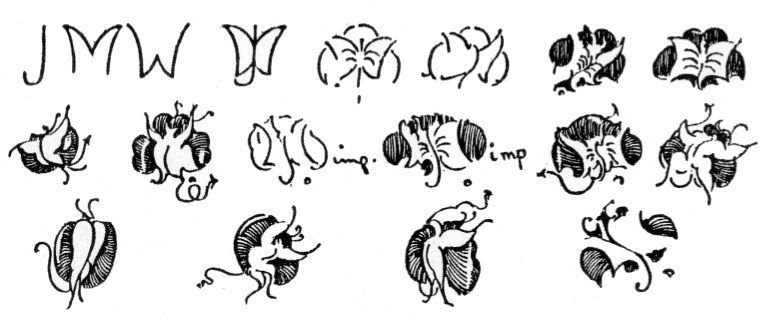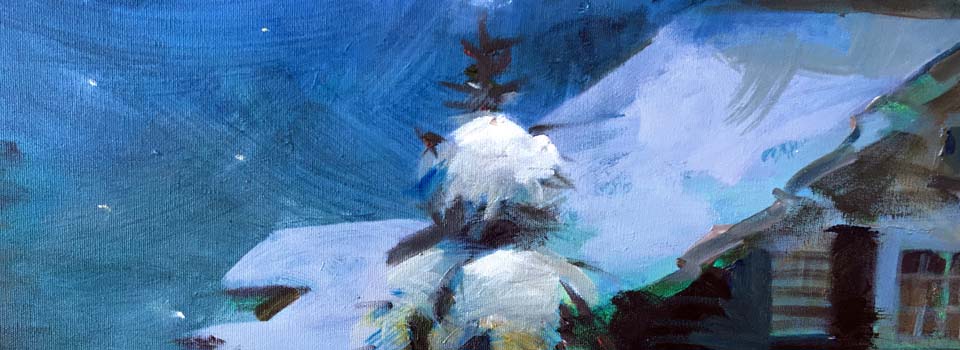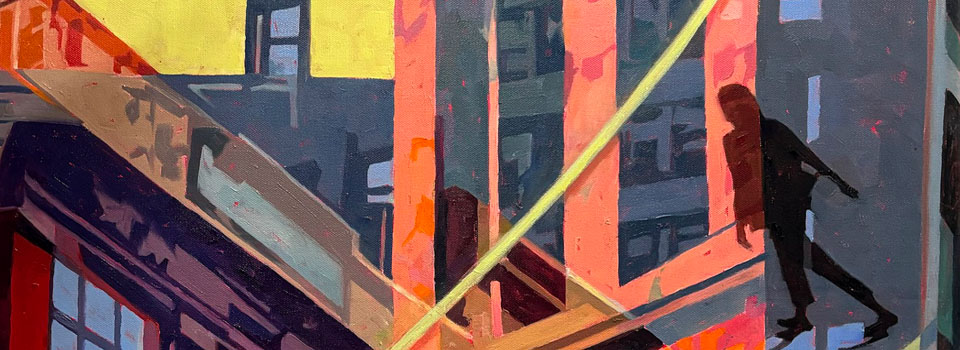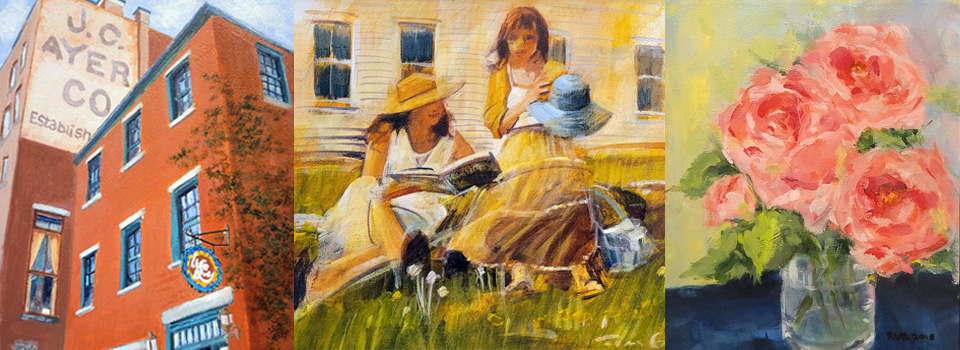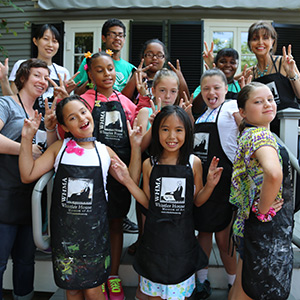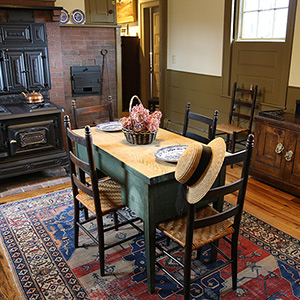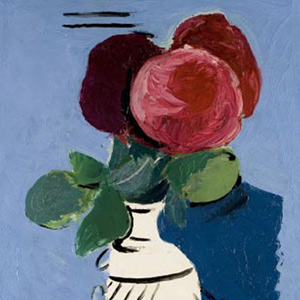James McNeill Whistler began experimenting with butterflies as a signature in his paintings and prints in the 1860s.
By the 1870s it had become a very important element in his works and he even used it as decoration and signature on letters, notes, and invitation cards. The butterfly symbol became so popular that people who bought his earlier works of art would return to Whistler so he could sign his monogram onto their paintings.
Whistler liked the effect of the butterfly because it resembled ideographs — a character or symbol representing an idea or thing (e.g. $, %, etc.) — often used in works of art from China, Japan, and other Eastern Asian countries at the time.
Whistler used his butterfly both as a symbol for himself and as part of the design in his paintings and prints. Over the years, he changed the butterfly monogram from simple to very complex, eventually adding stinging tail on the end.
